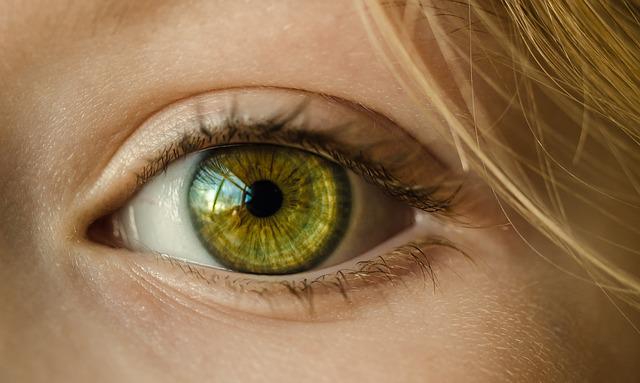Keratoconus, a degenerative eye disease, can begin as early as the age of 14. Because the disease is progressive, deformities in the cornea (a layer at the front of the eye) will cause it to bow outward over time if not treated.
However, corneal collagen cross-linking, a cutting-edge USA FDA-approved procedure, can prove to be phenomenal in keratoconus treatment and vastly improve vision in patients of all ages.
Keratoconus signs and symptoms
Symptoms of Keratoconus can vary, so it is recommended that you consult with an eye specialist who can assess and diagnose the condition.
Some signs of Keratoconus may include the following:
- Constant and regularly changing refractive errors
- Blurry vision
- Difficulty driving at night
- Increased light sensitivity
- Halos around lights and ghosting
- Eyestrain
- Headaches and general eye pain
- Eye irritation, excessive eye rubbing
Procedure
Corneal cross-linking is usually done in the operating room under sterile precautions. can be done right in your doctor’s office. It occurs first after eye drops that numb the eyes are applied, and then prescription medicine to calm you. You will then have specially formulated riboflavin (vitamin B2) eye drops that help the cornea absorb light better, which takes about 30 minutes for the liquid drops to soak into your cornea.Then, you will lie down in a chair and look up at a light. You shouldn’t feel any pain during the keratoconus treatment because your eyes will be numb. The procedure takes about 1 to 1.5 hours to complete.
Types of Corneal Cross-Linking
There are two types of corneal cross-linking: epi-off and the experimental epi-on.
In the epi-off technique, your doctor removes the cornea’s outer layer before putting it in liquid drops. With the experiment, your doctor has a softer tissue layer to prepare an eye seamed,
In the epi-on technique, the Riboflavin is pushed into the cornea while retaining that top layer.
Riboflavin and UV light are used in tandem to strengthen chemical bonds in the cornea, stiffening a structurally weak and unstable cornea.
Who should get Corneal Cross-Linking?
Typically, the treatment is recommended for patients whose corneal topography scans show that their keratoconus is worsening. It is recommended that you remove your contact lenses prior to your scan in order to obtain the most accurate results. If you cannot function without your lenses, treatment may still be available.
In this case, treatment may be offered based on your individual estimated risk of disease progression as long as the cornea is not too thin. The most important factor in determining this risk is age. Because of natural cross-linking as you age, keratoconus usually stops worsening by the mid-30s. However, regular visits to your ophthalmologist are required.
Thus, Collagen Cross-linking can aid your keratoconus treatment in a great way.
What happens during the initial consultation?
During your initial consultation, our surgeons will review the entire procedure with you. This will explain all of the risks, complications, and efficacy of the treatment so you can weigh the benefits and decide if it’s something you really need to do. During the consultation, you are free to ask any questions you have about anything you don’t understand. We hope that by informing you about corneal collagen crosslinking, we can help you make an informed decision about your keratoconus treatment. This way, you can decide whether to proceed with or cancel any future plans to be treated with this advanced solution.

How to prepare for this surgery?
Don’t wear eye makeup, perfume, or after-shave on the scheduled procedure day. In most instances, you’ll be able to eat a light meal and drink fluids beforehand. You’ll also need someone handy to drive you home afterwards since your eyesight will be affected. Carefully follow your appointment’s doctor’s instructions.
What happens afterwards?
After the procedure, here’s what you do to take care of your eyes:
- You might feel discomfort for a few days. Your doctor will give you medication if needed.
- It’s important not to rub your eyes for five days after the procedure.
- You might feel sensitive to light. Sunglasses can help.
Inform your doctor about any pain or a sudden worsening of your eyesight.
How frequently should I follow up?
The cornea surgeon will examine the patient’s eye the following day and again three to seven days later to check for epithelial healing. The eye drops will be used for one to three months. The patient will be required to return for follow-up appointments six weeks, three months, six months, one year, and two years after the procedure.
Do you have to take off from your work?
Yes. You should allow at least one week off when most of the healing occurs.
Your Vision After Corneal Cross-Linking
After the procedure, your eyesight will initially feel weak or blurry. However, some vision changes will likely happen with time and gentle focused exercises. For example, you may be more sensitive to light and have poorer vision for about one to three months following the corneal collagen cross-linking surgery.
Corneal cross-linking aims to slow the progression of your disease and prevent future vision problems, but sometimes this may be temporary. Also, it is possible that despite undergoing corneal cross-linking, you will still need new eyeglasses or contact lenses shortly.
Will both eyes be treated at the same time?
If you require CXL for both eyes, we can treat both of them at the same time. If you prefer to postpone the second eye treatment, please request it at your clinic appointment prior to your treatment.
Is there any evidence that the Corneal Collagen Cross-linking procedure really works?
Collagen cross-linking appears to be the only treatment that appears to prevent keratoconus from worsening. Three randomised clinical trials one year after CXL showed that it was successful in halting keratoconus progression in more than 90% of treated eyes, with more than 45% of eyes also improving in corneal shape. Long-term (up to five-year) results from a different study indicate a similarly high success rate in preventing keratoconus progression. In approximately 50% of CXL-treated eyes, vision improves after treatment. Our published data also supports this outcome.
Risks
Like most surgeries, corneal cross-linking can have various possible risks, like:
- An eye infection
- Damage to the cornea or epithelium
- Eye pain or swelling
- Hazy vision and blurred vision
Before you have the procedure, confirm your chances of having these issues with the doctor.
What are the benefits of Corneal Collagen Cross-linking surgery?
Although corneal crosslinking has some drawbacks, both eye surgeons and patients believe it is a worthwhile investment. Because corneal crosslinking reduces corneal bulging, patients can wear contact lenses more comfortably after the procedure, making daily life easier.
According to research, the effects of corneal cross-linking can last for several years. In many cases, the treatment can save patients from having to undergo corneal transplantation, which is a more invasive treatment option. A corneal transplant also necessitates a lengthy recuperation period, whereas corneal crosslinking does not. In fact, most patients can return to their normal routine within a few days of their corneal crosslinking procedure.
Get the right treatment for your eyes
An eye is the greatest gift humans got to appreciate their surroundings, and it is important to take good care of them. This is where we, Clear Vision, come into the picture and clear vision has a dedicated team to take care of your vision. Contact us or book an appointment with us for any consultation or keratoconus treatment in Mumbai, like corneal collagen cross-linking surgery.




